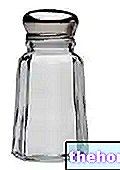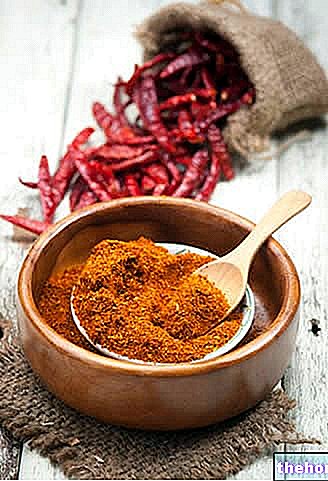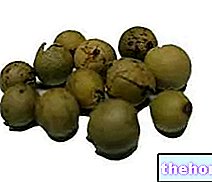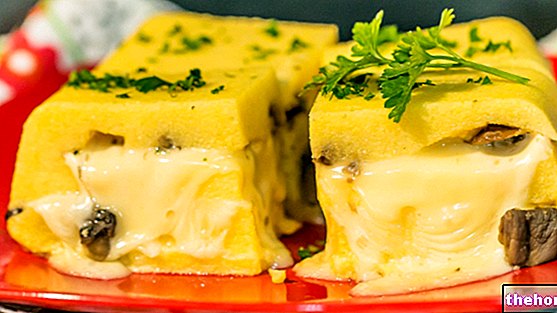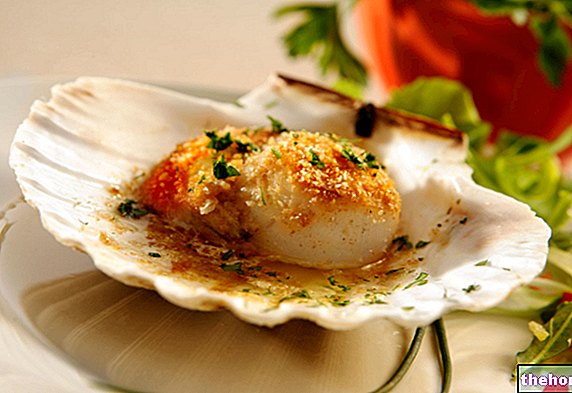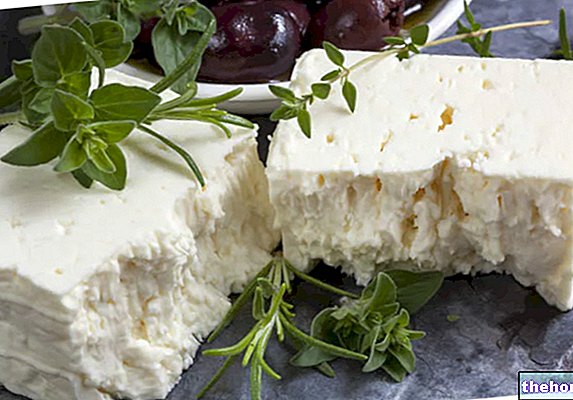The term horseradish it can have two similar but not superimposable meanings. In the first case, the noun indicates a particular vegetable with a long root, better known as horseradish, rustic horseradish or German horseradish; in the second, the name cren refers to a very particular sauce that is obtained from the plant already mentioned.

Cren plant
The horseradish (Armoracia rusticana, Cochlearia armoracia L.) is a plant that uses a long edible and typically aromatic root; the leaves are also edible, but are less used.
It is a perennial plant, that is, it does not die with the succession of the seasons. It grows spontaneously also in Italy (center and north), in the countryside, where it is easily recognizable especially during flowering (small white flowers); obviously (as for many roots) in this period it is not advisable to eradicate it (flowering compromises the trophism of the root) and it would be advisable to remember its location in order to pick it up in the autumn months.
The horseradish can also be cultivated; it does not like drought, water stagnation and likes fertile soils fertilized with vegetable macerates. The plant is typical of Central Europe, but different types of horseradish are present in all continents of the globe.
The horseradish root, known as a taproot, finds numerous applications in the phytotherapeutic and gastronomic sectors. It is considered one of the best known spicy foods (even if the sensations it transmits have little to do with chilli or black pepper) and its taste is almost acrid, the smell is pungent, while the volatile oil contained in the root it burns the eyes much more than the common onion (in addition to the Italian sauce, which we will see below, another horseradish-based condiment is wasabi).
Cren sauce
Horseradish sauce is a product obtained from the processing of horseradish root. This should be picked in autumn, when it is succulent, trophic and full. It should then be peeled, grated and mixed with crumbled white bread crumbs (1/3 of the root used), white wine or apple vinegar (1/3 or 1/4 of the root used), extra virgin olive oil (1 / 8 with respect to the root used), sugar (QB) and salt (QB).
The horseradish sauce is perfect as an accompaniment to meat dishes, especially boiled meat, but also smoked and grilled; widely used in northern Italy, horseradish sauce has its roots in Central European cuisine (in which it is also used grate the fresh root, eat it preserved in vinegar or sprinkle it in powder).
Homemade Cren
Cren sauce
Problems with playing the video? Reload the video from youtube.
- Go to the Video Page
- Go to the Video Recipes Section
- Watch the video on youtube
Phytotherapeutic Properties and Nutrition
For external use, horseradish finds application in dermatosis and herpes, but it can be quite irritating for sensitive skin. Moreover, thanks to its remarkable vasodilating capacity, it seems that horseradish for topical use can favor the improvement of symptoms related to tendonitis or to superficial joint pains, such as epithrocleitis, knee tendonitis, rheumatism, etc.
Beyond the particular flavor, which makes it an excellent substitute for pepper or mustard, horseradish is recommended in the phytotherapeutic field for:
- The adjuvant treatment of urinary infections (diuretic and antimicrobial effect) and intestinal parasites (vermifuge)
- Its eupeptic activity (promotes digestion by stimulating the secretion of gastric juices and biliary action)
- Its expectorant activity (useful, for example, in the presence of bronchitis and fat cough).
The most significant and biologically active components of horseradish are sulfur glycosides (or glucosinolates), in themselves tasteless and odorless, transforming into isothiocyanates (by enzymatic hydrolysis) acquire a particularly pungent aroma and the characteristic spicy flavor. These same molecules, according to some investigations (however not yet complete), seem to be involved in the inactivation of certain carcinogenic compounds even if, on the other hand, in considerable quantities, the glucosinolates could disturb the thyroid activity reducing its functionality. Cooking should definitively inactivate them but, for safety, the frequent, systematic and abundant use is not recommended for hypothyroid patients.
Horseradish does not have particularly interesting nutritional properties. It has a considerable concentration of water, while vitamins (basically water-soluble, especially C) and mineral salts (especially potassium and sodium) are almost all present in medium quantities. The fibers are abundant, but the energetic macronutrients do not reach levels sensitive.
However, remember that the use of horseradish is not recommended for those suffering from renal impairment and is not recommended (or suggested in moderation) in small children, pregnant women and nurses.
Furthermore, the use of horseradish orally can in any case cause gastrointestinal disturbances due to irritation of the mucous membranes; by the same principle, horseradish is contraindicated in cases of gastric and duodenal ulcer. Last but not least, horseradish is not suitable for feeding subjects suffering from hypothyroidism.
Other Foods - Spices Garlic Dill Cinnamon Cren Curry Daikon Broth Cube Tarragon Monosodium Glutamate Mace Nutmeg Oregano Paprika Black Pepper Green Pepper Pepper Cayenne Pepper Chilli Pepper Parsley Horseradish Rosemary Dietary Salt Whole Salt Iodized Salt Hyposodic Salt Salt Pink Himalayan Salt Mustard Tabasco Vanilla Wasabi Ginger OTHER ITEMS SPICES Categories Food Alcoholics Meat Cereals and derivatives Sweeteners Sweets Offal Fruit Dried fruit Milk and derivatives Legumes Oils and fats Fish and fishery products Salami Spices Vegetables Health recipes Appetizers Bread, Pizza and Brioche First courses Second courses Vegetables and Salads Sweets and Desserts Ice creams and sorbets Syrups, liqueurs and grappas Basic Preparations ---- In the Kitchen with Leftovers Carnival Recipes Christmas Recipes Dietary Recipes Light Recipes Woman's Day, Mother's Day, Dad's Day Functional Recipes International Recipes Easter Recipes Recipes for Celiacs Recipes for Diabetics Recipes for the Holidays Recipes for Valentine's Day Vegetarian Recipes Protein Recipes Regional Recipes Vegan Recipes

